
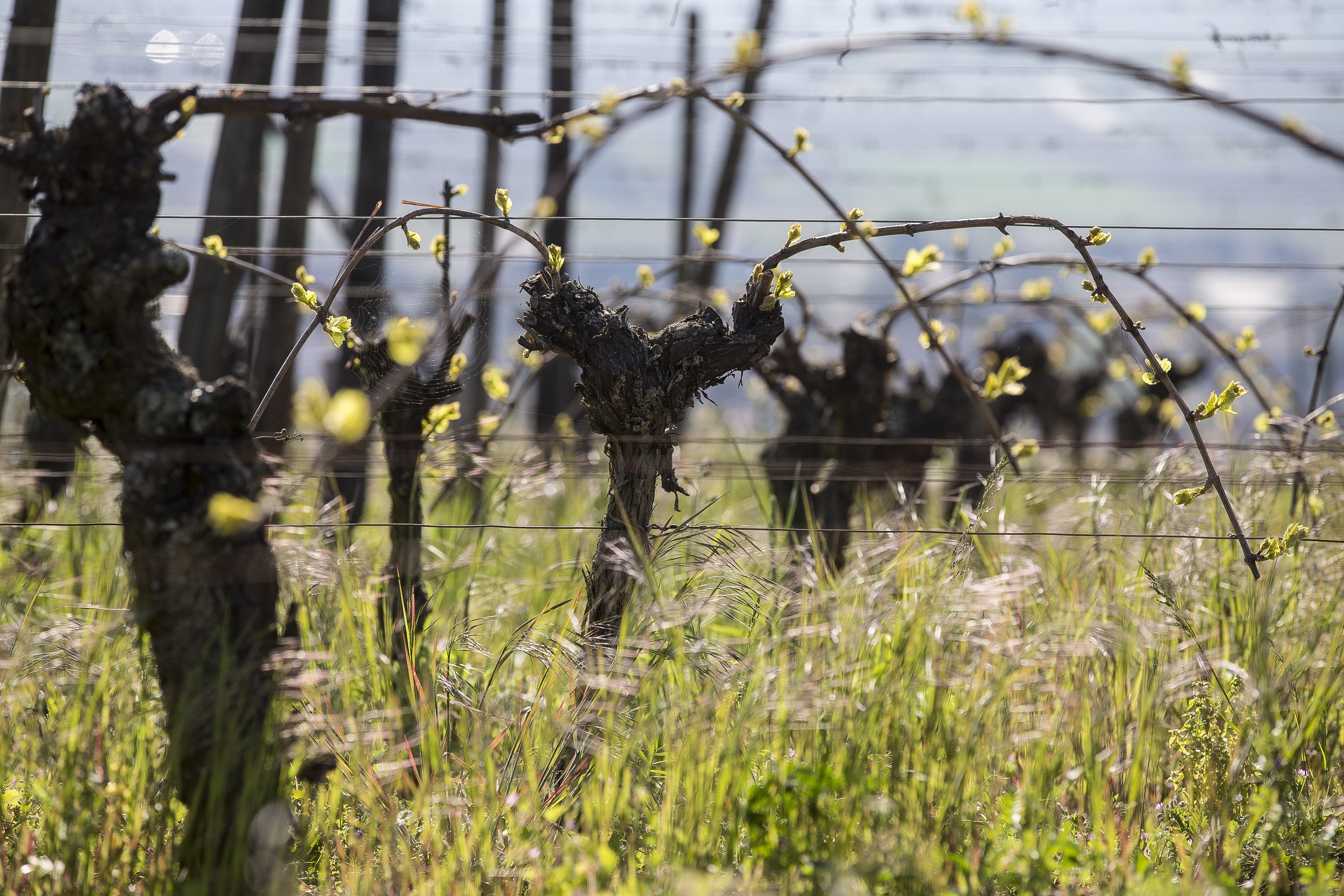
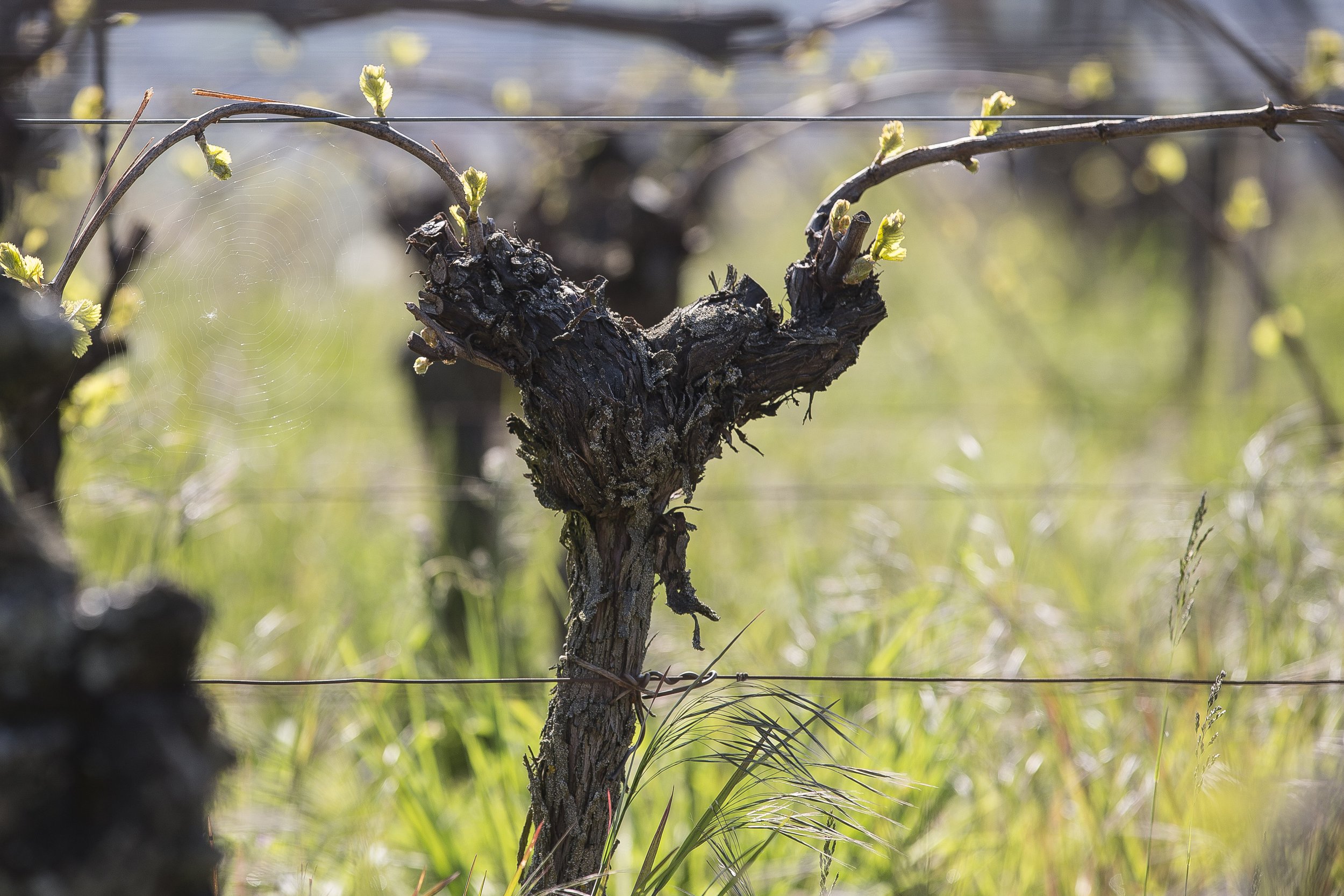
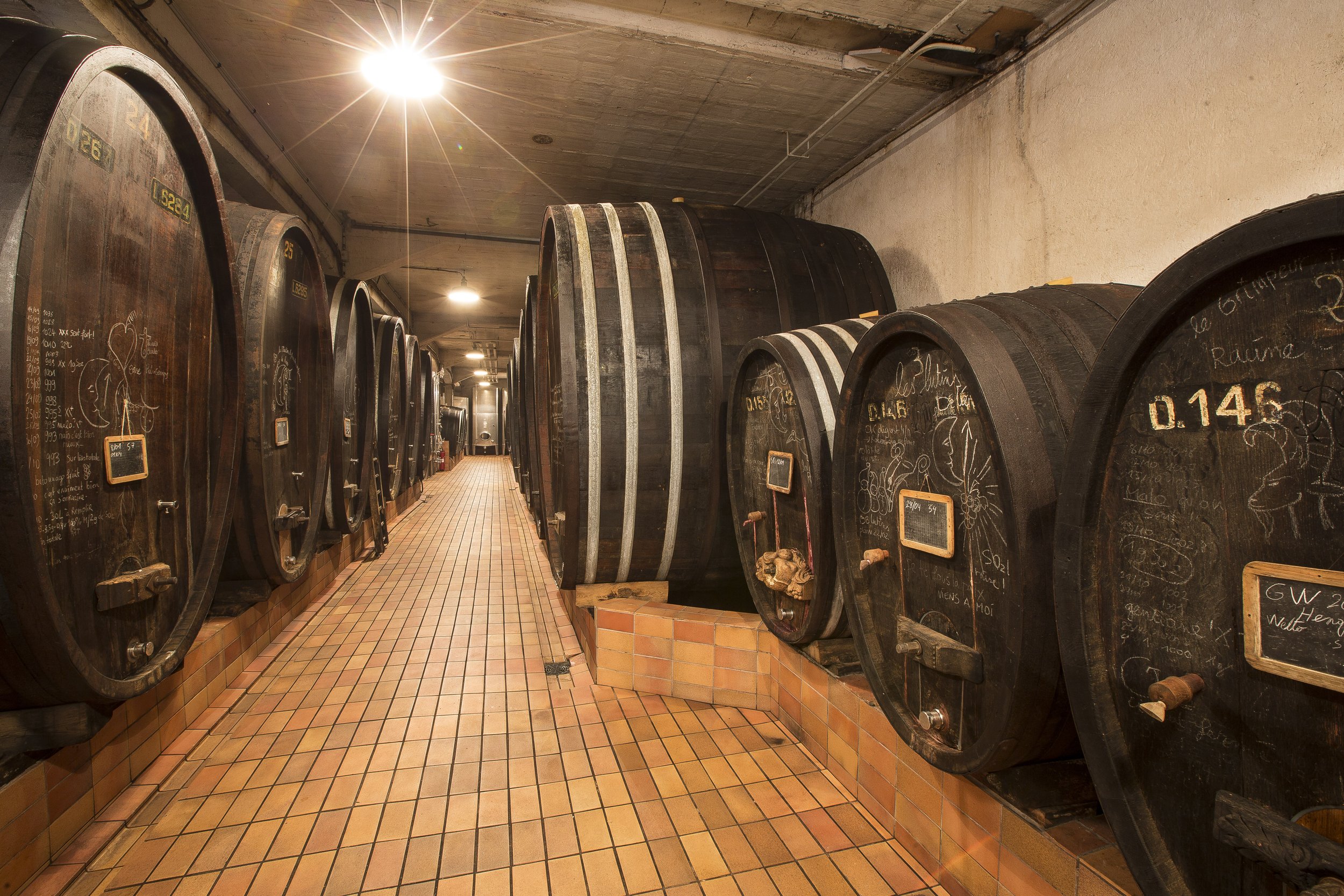
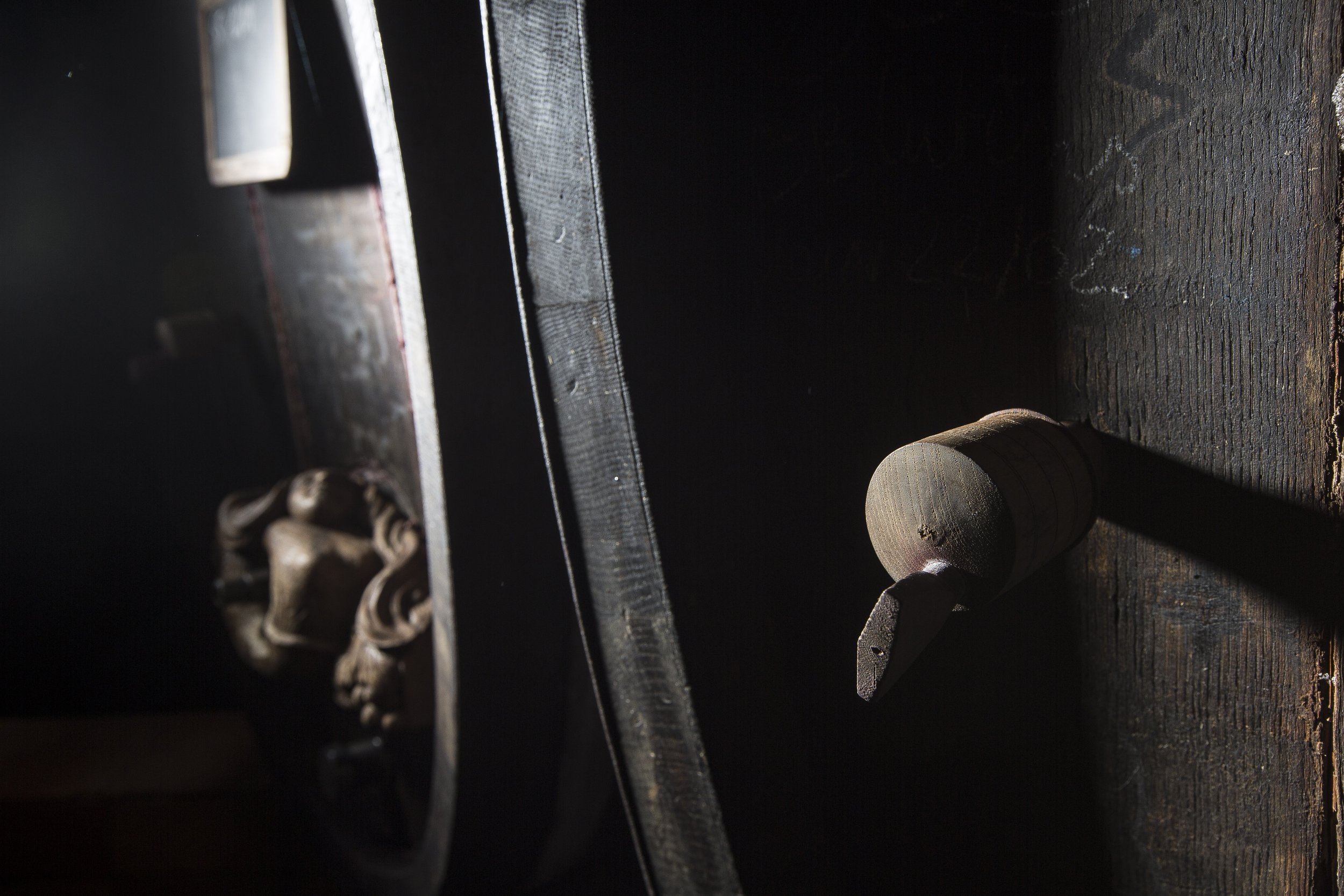
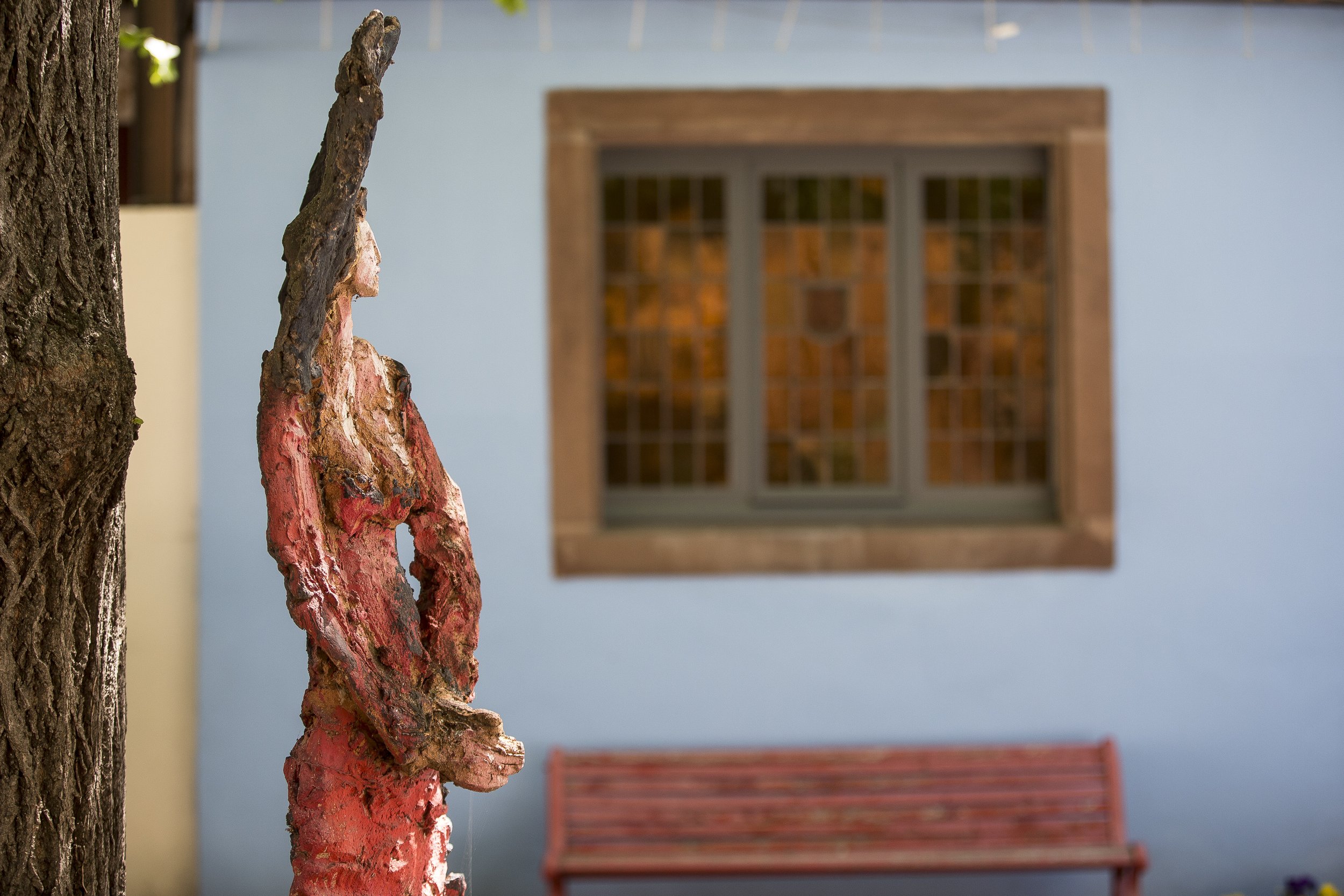

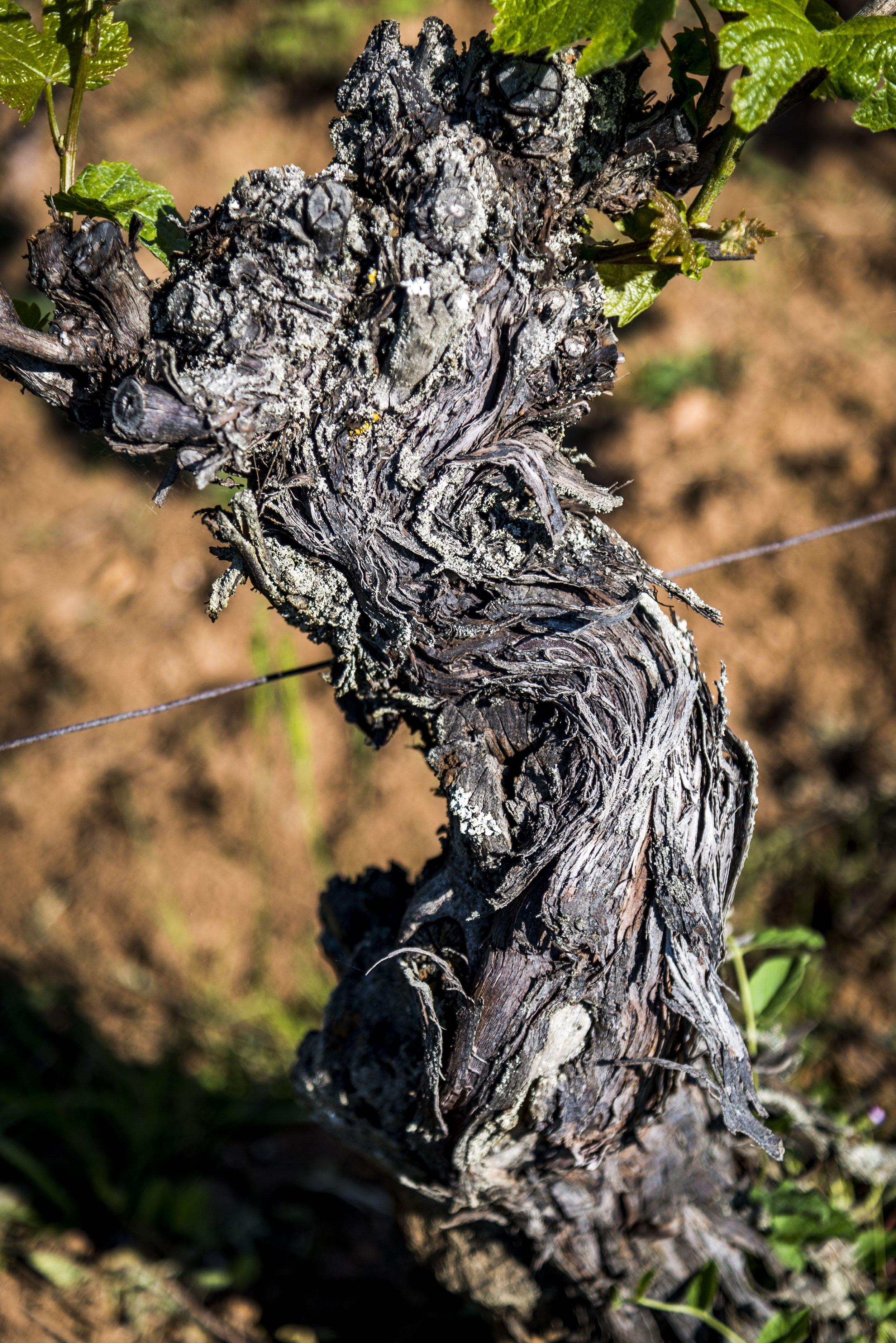
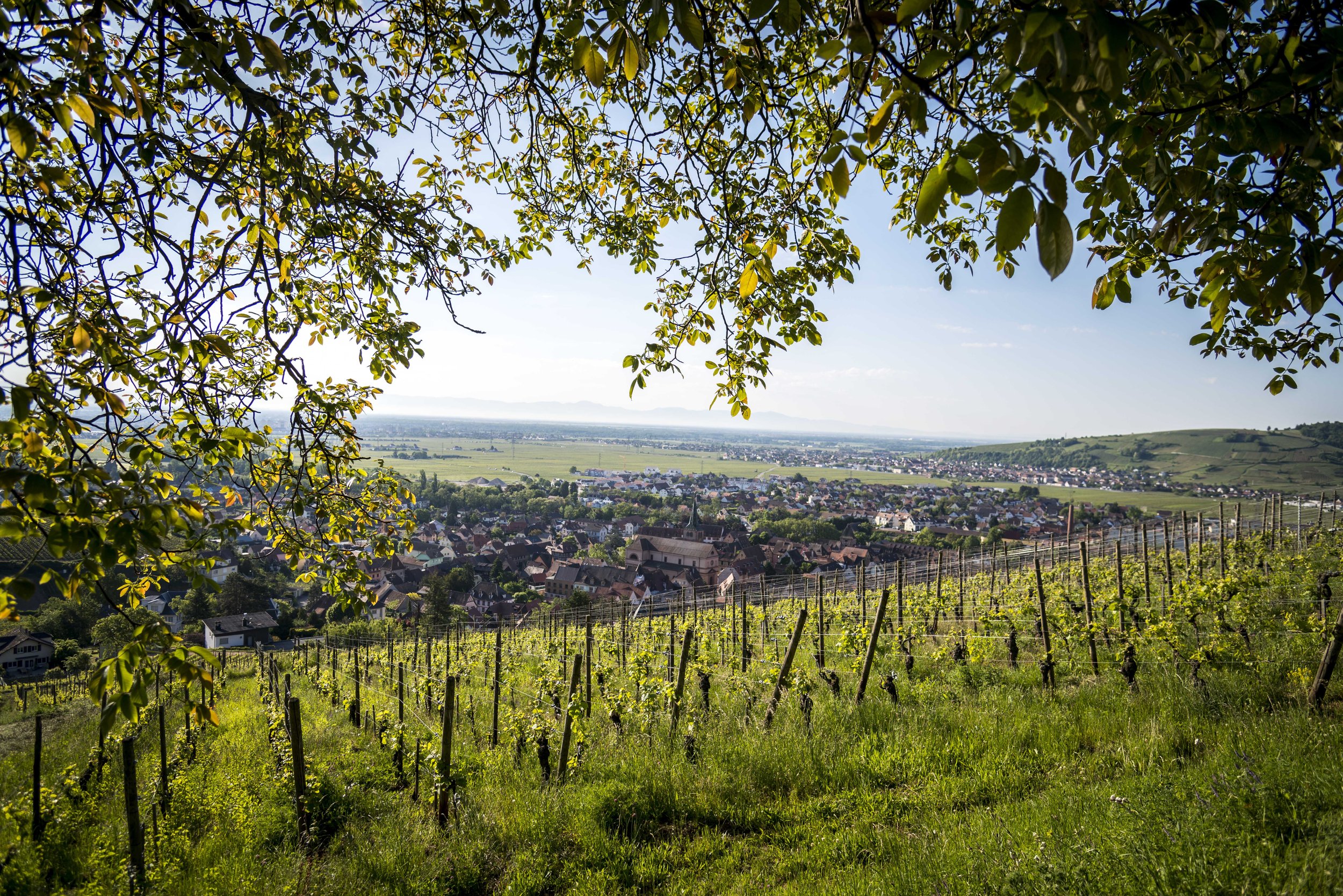
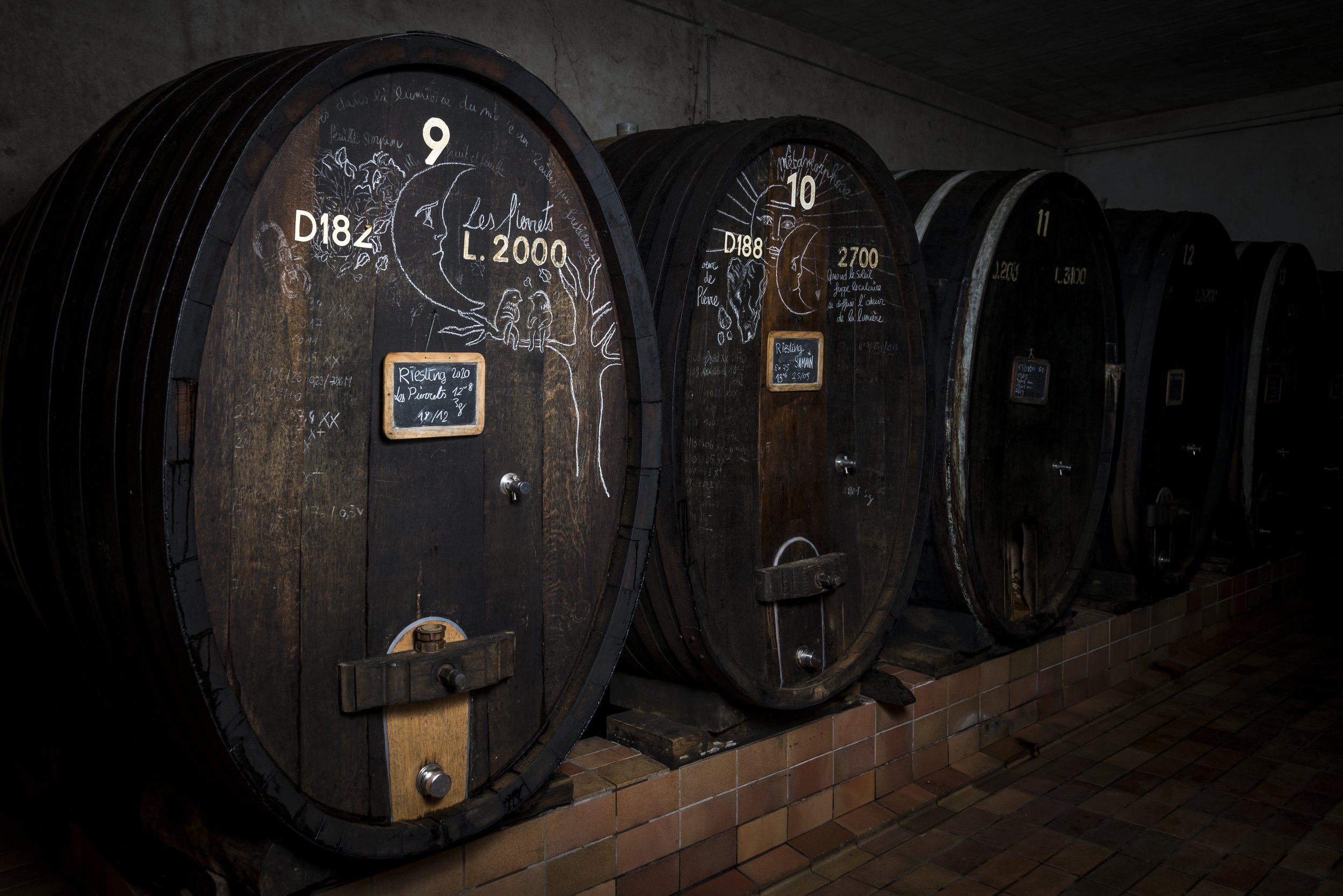
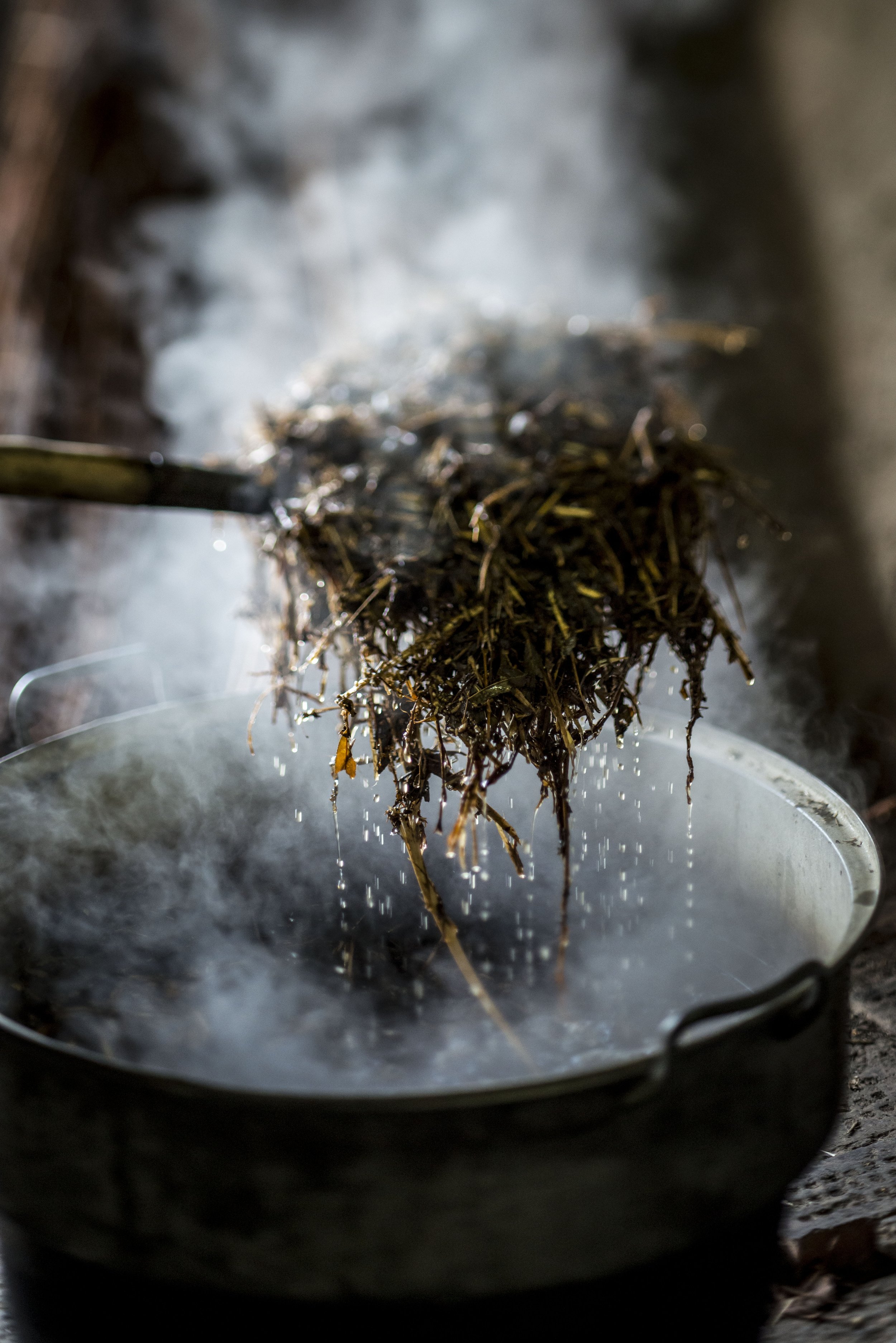
Josmeyer
Who: Céline and Isabelle Meyer
Where: Wintzenheim near Colmar (Alsace, France)
What grapes: Riesling, Pinot Blanc, Pinot Gris, Gewurztraminer, Sylvaner, Muscat, Pinot Noir, Pinot Auxerrois
Key fact: Pure expressions of wine, sky, earth and esprit
Website: https://www.domaine-josmeyer.com
Josmeyer “Le Kottabe” Riesling
Viticulture: Certified organic / Biodynamic
Soil type: A dozen small plots on alluvial and gravelly soils located on the plain around the communes of Wintzenheim and Turckheim make up this cuvée.
Elevation: 450m
Grapes: Riesling - 45 year old vines
Method of fermentation: The harvest is 100% manual. The grapes are pressed whole for about 6 hours in pneumatic presses. The settling is natural. Fermentation starts spontaneously with the yeasts in the middle in hundred-year-old casks. It is followed by aging on fine lees for several months, until bottling, which usually takes place at the end of spring. Before bottling, the wine is filtered.
Le Kottabe was imagined and created by Jean MEYER in 1986. The name, from the Greek "O Kottabos" was a game of skill, mixing wine and love. It was practiced in Greece during banquets in the 5th century BC. At the same time, the verticality of the consonants recalls the slender and assertive character of this grape variety.
This dry Riesling is defined by its nervous and digestible structure. Thus, depending on the vintage, the wine will be delicate and precise on the nose, with scents of citrus fruits, grapefruit or even blood orange for hot vintages or vegetal notes of aromatic herbs with iodized touches over a longer year. fresh. The mouth carried by a tense and long acidity structure the citrus fruit which develops in a harmonious way. A great salinity as well as a beautiful minerality accompanies the material which opens out after a few minutes of aeration.
Josmeyer “Le Fromenteau” Pinot Gris
Viticulture: Certified organic / Biodynamic
Soil type: A dozen small parcels on alluvial and gravelly soils located on the plain around the communes of Wintzenheim, Turckheim and Wettolsheim make up this cuvée.
Elevation: 450m
Grapes: Pinot Gris - 40 year old vines
Method of fermentation: The harvest is 100% manual. The grapes are pressed whole for about 6 hours in pneumatic presses. The settling is natural. Fermentation starts spontaneously with the yeasts in the middle in hundred-year-old casks. It is followed by aging on fine lees for several months until bottling, which usually takes place at the approach of summer or in autumn. Before bottling, the wine is filtered.
Le Fromenteau was imagined and created by Jean MEYER in 1992. This sweet name, reminiscent of cereal, is the old name given to Pinot Gris, particularly in Champagne.
This dry Pinot Gris is an ode to the land. It is defined by its firm and fleshy structure. Thus, depending on the vintage, the wine will be telluric on the nose, with scents of forest, hazelnuts, boulange or even sappy and saline notes sometimes full of game, often smoked, grilled or even roasted with age in a powerful year. The mouth, carried by its earthy character linked to the fruit, is long and persistent thanks to a supple but held acidity. The very present salinity accompanies the material which opens out after a few minutes of aeration.
Josmeyer “Les Folastries” Gewurztaminer
Viticulture: Certified organic / Biodynamic
Soil type: Four plots on alluvial and gravel soils located on the plain around the town of Wintzenheim and one plot in Wettolsheim make up this cuvée.
Elevation: 450m
Grapes: Gewurztraminer - 60 year old vines
Method of fermentation: The harvest is 100% manual. The grapes are pressed whole for about 6 hours in pneumatic presses. The settling is natural. Fermentation starts spontaneously with the yeasts in the middle. For this cuvée, we favor fermentation and aging on fine lees in stainless steel vats. Before bottling, the wine is filtered.
Les Folastries was imagined and created by Jean MEYER in 1986. This poetic name comes from a collection of poems by Pierre de Ronsard, entitled “Livret des Folastries”, evoking women, wine and roses.
This dry spirit Gewurztraminer exudes spice and travel. It is twirling, dense and assertive. On the nose, yellow rose rubs shoulders with cardamom, coriander, ginger root mixed with mango or lychee. The mouth draws on aromatic peppers linked to the flesh of the fruit and the spirit of the garden in summer.
The idea is to have spring water infused with spices and flowers. The salinity carried by the structure of the old vines accompanies the matter which opens out after a few minutes of aeration.
Josmeyer “H” Pinot Auxerrois Vieilles Vignes
Viticulture: Certified organic / Biodynamic
Soil type: This Pinot Auxerrois comes from two plots located close to each other, in the heart of Hengst. This Grand cru, facing South – South East, culminates at 360 meters and is located in the town of Wintzenheim. The total area is 53 hectares. The Hengst terroir is made up of brown limestone, sandstone and clay soils associated with Oligocene conglomerates. This stony soil comes from the Muschelskalk limestone intermixed with clay. It is a powerful land for wine, which heats up quickly in the spring. Rooting is favored by the stony structure and it has a water reserve thanks to the conglomerates.
Elevation: 450m
Grapes: Pinot Auxerrois - 60 year old vines
Method of fermentation: The harvest is 100% manual. The grapes are pressed whole for about 7 hours in pneumatic presses. The settling is natural. Fermentation starts spontaneously with the middle yeasts in a century-old cask. It is followed by aging on fine lees for several months, until bottling which usually takes place in July. Before bottling, the wine is filtered.
Pinot Auxerrois is not recognized as a “noble” grape variety and is therefore not entitled to the Grand Cru appellation. Thanks to the power of a single letter, the "H" for Hengst, this wine regains all its strength and nobility.
The name "Hengst" means Stallion.
This is a wine of great density which will need time and will become more refined over the years. The fermentations are often long on this wine where we find in its youth the fruit and its core at the opening of the nose.
These are tender sensations like mirabelle plum or apricot, accompanied by a chiseled minerality and great salinity. The mouth is fleshy and chalky at the same time. The fruit rubs shoulders with salt and mineral in its end of the mouth with long bitterness. This particular imprint ties it fiercely to the limestone soil of Hengst. But it is in the evolution, after 8 to 10 years that the evidence is there. The patina of the nose evolves towards tender bark, flower honey with creamy and saline touches at the same time. There is restraint and poise in the port of this wine, which surrounds itself with light, salt crystals, stony smell and tuns.
Josmeyer Riesling Grand Cru Hengst Alsace AOC
Viticulture: Certified organic / Biodynamic
Soil type: This Riesling comes from three plots located close to each other, in the heart of Hengst. This Grand cru, facing South – South East, culminates at 360 meters and is located in the town of Wintzenheim. The total area is 53 hectares. The Hengst terroir is made up of brown limestone, sandstone and clay soils associated with Oligocene conglomerates. This stony soil comes from the Muschelskalk limestone intermixed with clay. It is a powerful land for wine, which heats up quickly in the spring, rooting is favored by the stony structure and it has a water reserve thanks to the conglomerates.
Elevation: 450m
Grapes: Riesling - 50 year old vines
Method of fermentation: The harvest is 100% manual. The grapes are pressed whole for about 7 hours in pneumatic presses. The settling is natural. Fermentation starts spontaneously with the middle yeasts in a century-old cask. It is followed by aging on fine lees for several months, until bottling which usually takes place in July. Before bottling, the wine is filtered.
The name “Hengst” means Stallion.
This great dry, dense, powerful and mineral white wine is a model in terms of evolution. On the warm years, we find an expressive and open nose where candied citrus fruits, pink grapefruit, spice bind to a luminous minerality. The palate is crisp and full, with chiseled, crystal-clear acidity backed by flavors of fresh citrus and infused herbs.
Cooler vintages can sometimes be reserved or a little austere, but the delicate and often airy structure opens up within 5-7 years to improve with age. The minerality is then linked to the flower, with scents of verbena and limestone rock.
Josmeyer "Le Dragon" Alsace Riesling
Viticulture: Certified organic / Biodynamic
Soil type: limestone soil.
Grapes: Riesling - 55 year old vines
Method of fermentation: The harvest is 100% manual. The grapes are pressed whole for approximately 6 hours in our pneumatic presses. The settling is natural. Fermentation starts spontaneously with the yeasts from the environment in a small century-old barrel. It is followed by aging on fine lees for several months, until bottling which usually takes place during the summer. Before bottling, the wine is filtered.
The emblematic name of this place called “Drachenloch” means “the Dragon’s cave” in French. It is linked to a legend from Turckheim where a dragon, after fighting the sun, found refuge in this cave. His blood would have fertilized the local soil.
It is from a single parcel in Turckheim. The site has limestone soil, and the wine has a vibrant mineral character, and yellow apple aromas. For two decades this has been my favorite Josmeyer wine. I think it is one of the truly underrated great wines of Alsace. Because I love it, and I want you to taste Le Dragon, we are offering this wine at an artificially low frontline price. The joy of wine is sharing.
Josmeyer "Fleur de Lotus" Alsace AOC
Viticulture: Certified organic / Biodynamic
Soil type: A dozen small plots on alluvial and gravelly soils located on the plain around the communes of Wintzenheim and Turckheim make up this cuvée.
Grapes: This cuvée is a blend of Pinot Auxerrois, Gewurztraminer, Muscat and a touch of Riesling. 35 year old vines
Method of fermentation: The harvest is 100% manual. The grapes are pressed whole for approximately 6 hours in a pneumatic presses. The settling is natural. Fermentation starts spontaneously with local yeasts in century-old tuns. Fermentation and aging occurs on fine lees. Before bottling, the wine is filtered.
Josmeyer Riesling Grand Cru Brand Alsace AOC
Viticulture: Organic / Biodynamic
Soil type: Granite Subsoil, south/southeast sun exposure.
Elevation: 380m
Grapes: Riesling - 40 year old vines
Method of fermentation: The grapes are pressed whole for approximately 7 hours in our pneumatic presses. The settling is natural. Fermentation starts spontaneously with local yeasts in a century-old barrel. It is followed by aging on fine lees for several months, until bottling which usually takes place in July.
This showstopper Grand Cru wine has ripe berry and clementine aromas. The site name means “land of fire.” You will want to save bottles. Any initial austerity will dissipate with a tad more age.
Josmeyer “LIBRE sous le ciel” Vin de France
Viticulture: Certified organic / Biodynamic
Soil type: The grapes come from two parcels of vines. The first is located on a magnificent granite soil. The second comes from old vines located on gravelly soils.
Elevation: 450m
Grapes: Gewürztraminer - 25 years old / 45 years old
Method of fermentation: The harvest is 100% manual. A third of the grapes is pressed whole by the feet and the remaining two thirds are destemmed. The whole macerates for a month. Fermentation starts spontaneously with the middle yeasts in a stainless steel tank with a floating cap. The fermenting must will be punched once or twice a day for the first week. A delicate and rapid pressing closes this stage. Aging takes place in stainless steel vats without sulphur.
The LIBRE SOUS LE CIEL cuvée was imagined and created by Céline and Isabelle MEYER in 2020. The idea was to produce a dry, original and structured maceration wine with finesse, elegance and extraction. moderate.
The nose is dense and complex with delicate notes of bitter orange, apricot and rose petal. We find in the mouth an aromatic linked to the grape variety, but also a tannic, firm and saline structure which pushes the wine towards other horizons. Despite its character, the wine remains digestible and fine, its length stretches on beautiful bitterness where sweet spice and infusion of flowers mingle.
A visit to Josmeyer April 2023
It was raining as we drove the short distance from Colmar to Winztzenheim. In some ways I like rainy day winery visits. It eradicates the possibility of a vineyard tour, and while looking at certified biodynamic fields like those cultivated by Josmeyer can be a delightful, information-rich experience, I’ve seen a lot of vines in the last two decades. Josmeyer cultivate dozens of little parcels, I’m not going to understand their work better by standing in one of them.
I’d feel differently if the sun was shining. Beautiful spring weather catalyzes my desire for an amble through clover-covered rows.
We stood under the tree in the center of Josmeyer’s courtyard and dodged errant raindrops. My family had been conscripted for this visit. The kids were sullen. I’d stolen them away from the storefront delights of pedestrian Colmar. Candy, warm drinks topped with whipped cream, entire rooms filled with exotic sugary dried fruits. For them, wine is a drag. But this isn’t a story about them.
A face emerged in a second-story window. It was our first meeting. Moments later Céline Meyer emerged, and ushered us into a small tasting room. Along with her sister Isabelle, Céline has transformed a space that was probably quite dour in the past (traditional Hansel & Gretel architecture, a heavy wood bar) into a warm, inviting entrance to their domaine. Art is everywhere, and books. It’s unsurprising that the sisters, who both earned fine arts degrees at university, would be tuned in to the details that create the feel of a room. Within the existing framework of a traditional-looking Alsatian winery, that have managed to tone down the masculinity soaked into many comparable spaces by unremitting consecutive generations of patriarchal work structures.
Josmeyer was established in 1854. The Meyer sisters are the fifth generation for their family to run the farm, and the first generation of women to be in charge. Isabelle is the winemaker. Celine has been the administrator since 2010. And she handles people who show up on their doorstep. Like me.
The sisters farm 90 small plots that total 25 hectares. The property has been organic and biodynamic since 2000 (certified since 2004.) Every other row in Josmeyer’s vineyard is left unplowed, to encourage biodiversity. Fifteen hectares of their farm is sowed with cover crops, to increase aeration of the soils. They apply herbal tea decoctions (horsetail, wicker, chamomile, and yarrow) to reduce the farm’s dependence on copper and sulfur.
It's fun to look around at Josmeyer. I learned a lot! The philosophy of the women who run the farm is writ large throughout the winery. Isabelle started making elaborate chalk illustrations on the faces of the foudres in their cellar, in order to feel at home and comfortable in that subterranean space. “She had to make it her own.” Céline stated. Their father had worked in the room, preceded by generations of male Meyers. The drawings speak to the character of the wine contained in these giant ancient vessels. They also give comfort to their current steward.
And it’s something I haven’t seen before, which is a delight. Cellars vary from tiny stone alcoves to vast industrial warehouses. The Josmeyer space is moderate in scale, a normal underground workplace for a successful commercial winery in eastern France. Without Isabelle’s art to draw us closer, it would be tempting to breeze through the chilly, damp room, and return after a few short minutes to their courtyard. But it’s good to linger. There are things to be learned. The fuders house wine from distinct parcels surrounding Colmar, and copious notes adorn their faces, alongside flowers and girls and moons and dragons. While the art veers toward the fantastic, the effect on cellar guests is to humanize the space.
So what about the wines? There are many. While my daughters squirmed in their seats and pulled bored faces, we tasted a few.
2022 Fleur de Lotus blend was created by Jean Meyer 30 years ago. It’s a cuvee of Pinot Blanc, Auxerrois, Gewurztraminer, and Muscat. 2022 was a hot and dry vintage, the opposite of 2021. Summer temperatures nearly reached 40 degrees Celsius. Josmeyer harvested the grapes for this wine in August, to retain acidity. “It’s not easy to pick at the right time,” Celine said. “Natural fermentation with low acidity is more complicated. We have to avoid bacteria in old oak casks.” The Meyer sisters did well. Fleur de Lotus is flawless.
2019 Pinot Auxerrois “H” is planted in the heart of the Hengst Grand Cru. It’s a complex wine. Limestone soil gives it the acidity that Auxerrois needs. It helps that “H” is sourced from very old vines. Celine feels the wine is close to Chardonnay from Burgundy in style.
2022 “Le Kottabe” Riesling (bottled two days prior to tasting) smelled of ripe apples. The wine is already good. It has 7.8 grams of total acidity! Le Kottabe is a blend of old vine parcels in the plain.
2020 “Le Dragon” Riesling is from a single parcel in Turckheim. The site has limestone soil, and the wine has a vibrant mineral character and yellow apple aromas. For two decades, this has been my favorite Josmeyer wine. I think it is one of the truly underrated great wines of Alsace.
2019 Pinot Gris Fromenteau has a typically waxy palate-feel, and pear/lychee aromas. The wine is juicy, and concentrated. It was a hot vintage, and the wine is wonderfully ripe. It’s also made from a parcel of old vines on the plain. Meyer bottled this wine with zero residual sugar, at 13.3 degrees abv. Céline noted that Pinot Gris isn’t overly impacted by climate change. The alcohol goes up a degree or two, but the character of the wine doesn’t change much. She recommends it with lentils and hummus.
2020 Gewurztraminer “Les Folastries” is made from a lower elevation parcel of old vines. The wine is fermented in stainless steel. It has classic varietal aromas. On the palate it's savoury. Baking spice aromas emerge. They recommend pairing it with very ripe tomatoes.
2019 Riesling Grand Cru Brand has ripe berry and clementine aromas. The wine is shaped by granite subsoil and a south/southeast sun exposure, and 40-year-old vines. The site name means “land of fire.” The wine is made using spontaneous yeast fermentation in a century-old barrel. The grapes are pressed whole-cluster.
“The rustling of the earth, the color of time, the shine of the grapes, the energy of life. This part of the unknown, the precision and the momentum. The emotion of wine, like a poem in the wind.” - Céline Meyer









